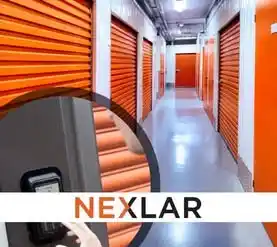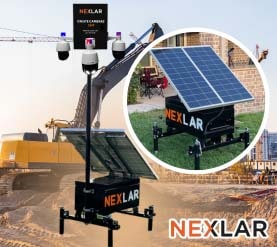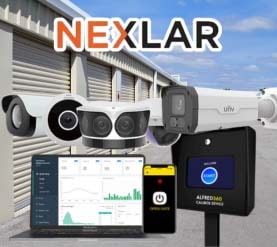

Trusted by 100,000+ organizations globally







Table Of Contents
-
- 1. Discover Leading Building Access Control Systems for Enhanced Security in 2025
- 2. Evaluate Popular Building Access Control Systems in 2025
- 3. Understanding Controlled Building Access Strategies
- 4. Security Challenges in Building Access Control Systems
- 5. Compliance and Regulations in Building Access Control
- 6. Future Trends in Building Access Control Systems
- 7. Frequently Asked Questions About Building Access Control Systems
As we progress through 2025, access control systems is undergoing a transformative shift, driven by advancements in AI, biometrics, and IoT. Organizations across industries are adopting smarter, more adaptive security solutions to combat evolving threats while improving user experience. Below, we explore the top trends in access control technology, their implications, and how they are shaping the future of security.
1. Biometric Access Control Advancements
Biometric access control authentication has moved beyond basic fingerprint scanning to incorporate highly sophisticated and secure methods.
Key Developments:
- Contactless Biometrics: Post-pandemic, hygiene concerns have accelerated the adoption of touchless solutions like facial recognition, iris scanning, and even gait recognition (identifying individuals based on walking patterns).
- Liveness Detection: Advanced systems now use AI to detect spoofing attempts (e.g., photos or masks used to trick facial recognition).
- Behavioral Biometrics: Keystroke dynamics, voice recognition, and even heartbeat authentication (using radar-based sensors) are emerging as supplementary security layers.
Real-World Applications:
- Airports & Border Control: Many countries now use facial recognition e-gates for seamless passenger processing.
- Healthcare: Hospitals deploy palm vein scanners for secure access to sensitive areas like pharmacies and patient records.
2. AI and Machine Learning Integration
AI is revolutionizing access control by making systems predictive rather than reactive.
Key Capabilities:
- Anomaly Detection: AI analyzes access patterns and flags unusual behavior (e.g., an employee attempting entry at 3 AM).
- Automated Threat Response: If a breach is suspected, AI can lock down zones, trigger alarms, or notify security teams in real time.
- Adaptive Authentication: AI adjusts security levels based on risk—requiring stronger verification in high-risk scenarios.
Use Cases:
- Corporate Offices: AI-powered systems detect tailgating (unauthorized individuals following an employee).
- Smart Cities: AI monitors public infrastructure access, preventing vandalism or unauthorized entry.
3. Mobile and Cloud-Based Access Control
The shift from physical credentials to mobile based access is accelerating.
Advantages:
- Eliminates Card Cloning Risks: Mobile credentials use encrypted Bluetooth or NFC, making them harder to duplicate than traditional cards.
- Remote Management: Administrators can issue, revoke, or modify access rights instantly via cloud platforms.
- Visitor Management Systems: Temporary access can be granted via QR codes or digital keys sent to guests’ phones.
Industry Adoption:
- Co-Working Spaces: Companies like WeWork use mobile access for flexible workspace management.
- Residential Buildings: Smart locks (e.g., August, Yale) allow tenants to enter via smartphones.
4. Multi-Factor Authentication (MFA) Becomes Standard
MFA is no longer optional—regulations like NIST 800-63B now mandate it for high-security environments.
Popular MFA Combinations in 2025:
- Biometric + PIN + Mobile Push Notification
- Smart Card + Facial Recognition
- One-Time Password (OTP) + Behavioral Biometrics
Why It Matters:
- Prevents Credential Theft: Even if a hacker steals a password, they still need another factor (e.g., fingerprint).
- Compliance-Driven: Required for GDPR, HIPAA, and financial sector regulations.
5. IoT-Enabled Smart Access Control
IoT connects access control with building automation, creating smarter, more efficient environments.
Key Integrations:
- Occupancy Monitoring: Sensors adjust lighting, HVAC, and door locks based on real-time occupancy.
- Predictive Maintenance: IoT detects failing door hardware before a breach occurs.
- Emergency Response: In a fire, IoT unlocks evacuation routes while restricting unsafe areas.
Example:
- Smart Offices: Employees gain access, and the system automatically books a desk and adjusts lighting preferences.
6. Enhanced Privacy & Compliance Measures
With stricter data laws (e.g., EU’s AI Act, California’s CPRA), access control must balance security and privacy.
Emerging Solutions:
- Decentralized Identity (DID): Users control their credentials via blockchain, reducing reliance on centralized databases.
- Zero-Knowledge Proofs (ZKP): Systems verify identity without storing personal data, minimizing breach risks.
7. Integration with Building Automation
Modern access control is merging with BMS (Building Management Systems) for holistic security.
Benefits:
- Energy Savings: Doors lock/unlock based on scheduled occupancy, reducing HVAC waste.
- Unified Security: Access logs, surveillance, and alarms feed into a single dashboard.
8. Blockchain for Secure Access Management
Blockchain ensures immutable, tamper-proof access logs, crucial for high-security facilities.
Applications:
- Government Facilities: Prevents log tampering in classified areas.
- Healthcare: Secures patient data access with audit trails.
9. Enhanced Video Integration
AI-powered video analytics now work alongside access control for real-time threat detection.
Features:
- Face Recognition at Scale: Identifies unauthorized persons in crowds.
Automated Alerts: Flags loitering, forced entry attempts, or abandoned objects
10. Customized Industry Solutions
Different sectors need tailored access control:
- Healthcare: Wearable RFID badges track staff movement for infection control.
- Finance: Time-based access restricts vault entry to approved hours.
- Education: Parental access portals control school entry during pick-up/drop-off.
Conclusion
The future of access control is intelligent, adaptive, and user-centric. Organizations that embrace these trends will not only enhance security but also improve efficiency and compliance.
For bespoke access control solutions, explore Nexlar Security’s cutting-edge offerings.
Frequently Asked Questions
How secure is facial recognition in 2025?
Modern systems use 3D mapping and infrared sensors to prevent spoofing, making them far more secure than older camera-based versions.
Can AI-powered access control replace human security guards?
AI augments guards by handling routine checks, but humans remain essential for complex decision-making.
What happens if my phone (with mobile credentials) is lost?
Credentials can be remotely wiped, and backup methods (biometrics, PINs) ensure uninterrupted access.
How does blockchain prevent access log tampering?
Each entry is cryptographically chained, making alterations impossible without detection.
Gates Access For Self-Storage
- April 12, 2022
- admin
Mobile Surveillance Cameras in Houston
- September 12, 2023
- admin
Self-Storage Software Access Control System
- September 25, 2023
- admin
Construction site security cameras rental houston
- May 3, 2024
- Sidra Mehak
Self Storage Security Cameras
- May 3, 2024
- Moeez Anwer




